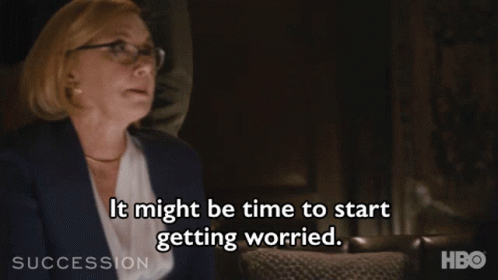After two years of waiting, the new season of the popular HBO show Succession is finally here.
The plot of the show is based around the rich and ruthless Roy family who owns one of the largest media companies in the world.
Since we’re among the big fans of the show, we watched the new season immediately when it came out.
? Read Digital PR Explained: Best Strategies and Tools
One thing that was particularly interesting to us from the season premiere is Kendall’s obsession with his reputation, public perception, media monitoring, and handling crisis communication in the aftermath of his bombastic press conference.
To be honest, we know that Kendall’s focus comes purely from his vanity and eagerness to take down his father’s company. But, aside from that, this episode is a great learning experience for all PR professionals and C-level executives out there.
Let’s jump right into the PR lessons we got from Succession:
1. Reputation Is Where It’s At
Crisis situations are a big test on your brand or personal reputation. If you’ve been diligent in building up and protecting your reputation, you have somewhat better chances of getting out of crisis unscathed.
In the case of Kendall Roy, he knows that getting what he wants largely depends on protecting and building his reputation. That’s why he told cousin Greg to take his “cultural temperature”. One wrong move and his plans would be ruined. What’s upsetting is that he’s using the sexual harassment scandal in his father’s company to present himself as a big advocate for women’s rights.
We don’t know how the season will end, but we do know that his strategy is flawed. What Kendall is doing is wrong on so many levels because using a tragic situation to get ahead is not the way to go.
Nowadays, customers are great at spotting when brands are not honest and calling them out. So, in the real world, sooner or later the brand or a person exploiting such events would be exposed.
However, let’s assume you’re not shady as Kendall Roy, but you’ve found yourself in a bit of a pickle. How do you handle crisis communication the right way?
First of all, if you already have a crisis communication plan in place, you’re one step ahead. Second of all, if media monitoring is part of your crisis communication plan, you’re two steps ahead.
What do we mean by that?
Well, if you’re using media monitoring to track your mentions, you’ll be able to detect when the number of mentions starts growing unexpectedly and respond quickly. Also, if you have a crisis communication plan in place (which neither Kendall nor Logan did), your response will be that much quicker.

Speed is of importance when it comes to crisis communication because customers want answers clear and right away. The more you’re putting off the response, the more damage you’re doing to your reputation.
The lesson here is to continuously work on your brand reputation. Not just because you might end up in a crisis further down the road, but because a good brand reputation is important for customer acquisition and retention, competitive advantage, business expansion, and so on.
Read Crisis Communications Plan In 8 Steps
2. Get Yourself a Media Monitoring Tool
“Before he got his media monitoring in place”, Kendall asked cousin Greg to “feed him the metadata, anything that’s gonna move the market on him reputationally”. To which cousin Greg responded: “media monitoring department over here”, and started reading top tweets to him.
Soon enough, cousin Greg realized that the “internet is big”.
Meaning, having a media monitoring tool in this situation is pretty important.
But all jokes aside, when crisis strikes, there’s no way you’ll be able to google your way out. There’s too much information that can go under the radar if you’re not monitoring your mentions. Plus, when a crisis strikes, there’s no time to waste. And manually searching for your mentions is a waste of time and valuable data that you would otherwise get from a media monitoring tool.
Especially when it comes to sentiment analysis, detecting where the crisis started, which issue sparked the crisis, and so on.
All of this data can help you construct succinct and persuasive messaging that will mitigate, or even better end the crisis you have in hand.
The lesson here is to avoid wasting time doing tasks that can be performed by a tool. The fact is that using PR tools massively decreases the manual workload and improves the amount of data and analytics you receive. Plus, you can focus on more urgent tasks at hand.
Read The 6 Best PR Tools for Monitoring your Brand’s Performance
3. Twitter Is Important, But…
While doing his duty of being a one-man media monitoring department, cousin Greg focused only on researching tweets. That’s great, but what about forums, other social media platforms and news outlets?
The truth is, many crises start on Twitter but they often spread to other outlets pretty quickly. That way, your crisis situation is reaching more and more people each minute.
By not monitoring what is being said about your brand during a crisis on all channels, you’re missing out on a lot of (mis)information circulating around. Without this information, you simply can’t create messaging that will mitigate the ongoing crisis.
The lesson here is to have a comprehensive overview of the crisis progression so you can resolve it quickly. There’s no point in putting down the fire on only one channel and letting it burn on ten others. That way you’re prolonging it and risking afflicting more damage to your brand.
To Sum Up
When the crisis starts, whether self-inflicted like in the case of the Roy family or not, your response to it should be fast and succint. Also, having a set up crisis communications plan along with constant media monitoring of you brand mentions can help you avoid all the chaos that goes with online crisis.



